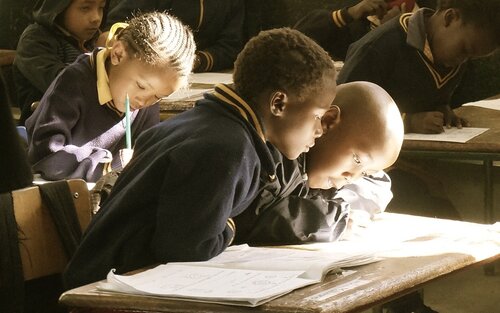Access to education has been globally acknowledged as an overarching right. The Global Monitoring report in 2010 indicates that an estimated 77 million children were excluded from education, a third of that number being children with disabilities. Mainstream education or mainstream school is the term often used to describe the educational experience of typically developing children. On the other hand, special education is tailored for those students who have a mental, physical, social or emotional condition that hinders their learning. So how can one transition from special school to mainstream school?
-
1
Gauge the necessity to transition to a mainstream school
Before making this crucial decision to transition to a mainstream school, any parent or guardian needs to ask whether it is necessary to move to their child or to move the learner to a mainstream school.
A parent should consider whether they wish to move their child in light of an ongoing review of the child’s needs and liaising with the school and other professionals. The decision should be based on how the child’s needs are changing over time as he/she develops , as well as the available placement options, which may be mainstream or remedial settings within the new school.
The new school may need time to put adequate planning in place. Some of this planning can take time. For example, the school building may need to be adapted, teaching staff may need to be upskilled, or specialist equipment may need to be arranged.
-
2
Identify the right school
The environments and approaches are very different. In mainstream education classrooms the majority of the time students receive whole-group instructions, meaning that there is no personalized attention from the teacher. Their methods of instructions consist of lectures, discussions, case studies, writing, group projects, public reviews, and independent student projects. The kind of learning that requires a student to be more independent.
In contrast, different instructional techniques are used for some students with special educational needs. Instructional strategies are classified as being either accommodations or modifications. An accommodation is a reasonable adjustment to teaching practices so that the student learns the same material, but in a format that is more accessible to the student. A modification changes or adapts the material to make it simpler.
-
3
Identify assistive devices
Assistive devices make life bearable for anyone with a disability and especially when it comes to movement. A smooth transition from a special school to a mainstream one is not that easy because in a country like Kenya, most mainstream schools don’t have assistive devices for children or learners with disabilities.
-
4
Deal with negative cultural beliefs
There is also a strong belief that children born with disabilities are as a result of a curse parents need to break away from these taboo beliefs and take such children to school. Other factors that need to be worked on are negative attitudes in the society, issues of poverty, limited awareness on how to handle a child with disabilities, safety issues in some parts of the country where such children cannot even go to school, and unsuitable institutions that do more harm than good.
-
5
Communicate with the student
When transitioning to a new environment, it is important to let the child know by reassuring her that changes make a lot of people nervous. In other words, communicate; don’t ambush your child with information t. Let them know that a new school or setting means fun and new friends. Get other people close to her like the aunties, guardians, or family friends talk about the excitement and anxiety of trying new things. Information is power and the more information a child has, the more they are likely to feel comfortable and adjust to the new school.
Transitioning from special school to mainstream school in Africa and especially in Kenya is no easy task but not completely out of reach. It is actually a gap that can be filled by society in terms of creating educational environments that are suitable for learners with any kind of disabilities. Teachers with skills in dealing with special children can be motivated by being given special allowance because their work is more tedious and requires more specialised skills.

